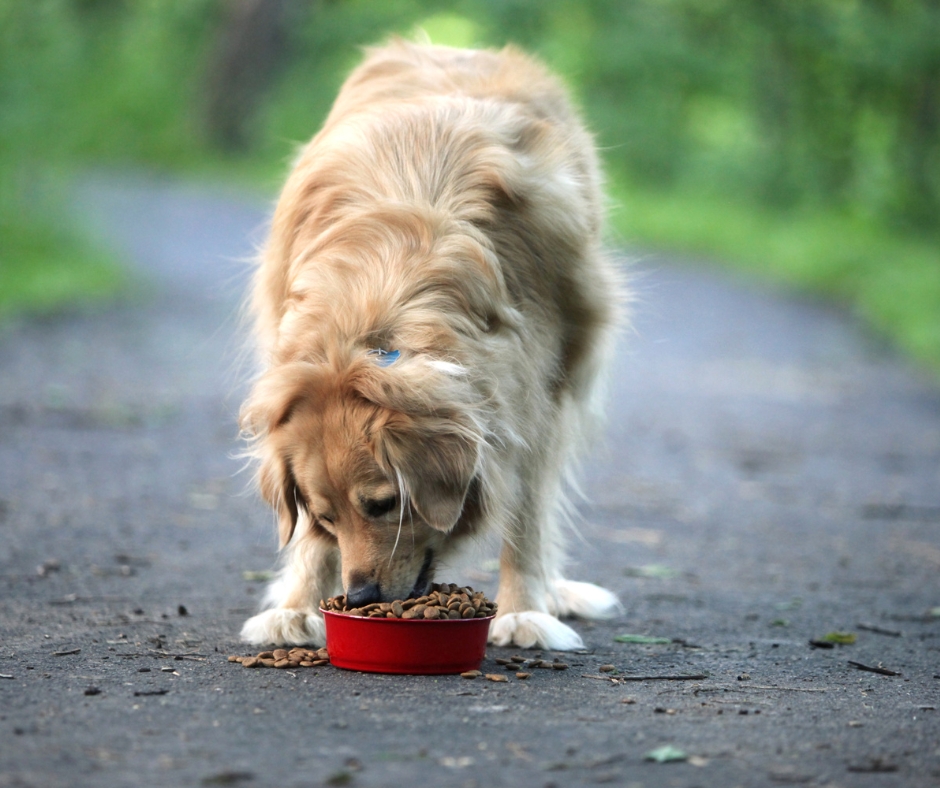Is your dog allergic to anything on his skin? Homemade Dog Food Recipes for Skin Allergies Vet Approved.
Homemade Dog Food Recipes for Skin Allergies Vet Approved with these Your dog’s pain and itching may be lessened. Some commercial meals frequently cause reactions in dogs with sensitive skin. By controlling the components in homemade dishes, you may steer clear of allergens that might cause responses. Recipes authorized by veterinarians guarantee that the meals offer a balanced diet.
This soothes your dog’s skin and keeps them healthy. Making meals at home also gives you peace of mind. You know exactly what goes into every dish. In this article, we’ll examine a few simple, healthy recipes. Your dog will love the taste, and you’ll love the result. Let’s start with these easy, nutritious options.

The Advantages of Making Your Own Dog Food
For dogs with skin allergies in particular, homemade dog food recipes for skin allergies vet-approved has several advantages. By controlling the ingredients, you can make sure your pet receives the greatest nutrition. This can lessen and control the symptoms of allergies. To find out more about the advantages of homemade dog food, continue reading.
Control of Nutrition
You have complete nutritional control when you make dog food at home. You choose high-quality, fresh ingredients. This ensures a balanced diet tailored to your dog’s needs. Compared to commercial dog food recipes, homemade ones are more versatile. This helps meet certain dietary requirements. Preservatives, fillers, and artificial additions can be avoided. Only the greatest nutrients are given to your dog. This may result in better general health.
Management of Allergies
When it comes to managing allergies, homemade dog food recipes for skin allergies vet-approved may be really helpful. Common allergies are present in a lot of commercial dog meals. These include soy, wheat, and chemical additives. By feeding your dog homemade food, you may be able to eliminate these allergies. There are compounds that are hypoallergenic. This can reduce allergy reactions and improve your dog’s skin health. You may also monitor the diet and adjust it as needed. If a new element reacts, it can be removed. This level of control facilitates effective allergy treatment for your dog.
Typical Dog Skin Allergies
Skin allergies are common in dogs. These allergies may irritate and create discomfort. It is easier to provide comfort and treatment when one is aware of the frequent skin allergies in dogs.
Signs to Look Out For
- Overzealous scratching
- Skin that is red and irritated
- Hotspots
- Patches of hair loss
- Paw-licking on a regular basis
- Infections of the ears
These signs point to a potential allergy. Pay close attention to your dog. The management of these symptoms benefits from early identification.
Common Triggers
- Fleas: Flea bites cause intense itching. This leads to scratching and skin irritation.
- Food Allergies: Certain proteins or grains trigger allergic reactions. Common culprits include beef, chicken, and wheat.
- Environmental Allergens: Pollens, dust mites, and mold spores cause seasonal allergies. These allergens are prevalent in spring and fall.
- Contact allergens: Certain chemicals in shampoos or cleaning products irritate the skin. Always use dog-friendly products.
It’s important to stay away from these triggers. Always seek advice from a veterinarian. They provide guidance on how to effectively treat allergies.
Advice from Vets
Vet-approved homemade dog food recipes that cater to skin allergies may be a beneficial option for your pet. But to make sure your dog is getting the proper nutrients, it’s imperative that you heed your veterinarian’s advice. Veterinarians help us understand the special needs of pets with skin allergies. They provide us with advice on the best and safest substances. Let’s begin with some important veterinarian guidance.
Nutrient Requirements
Every recipe for homemade dog food must meet your dog’s nutritional demands. Dogs with skin allergies need certain minerals for healthy skin and coat.
- Proteins are essential for the growth and repair of muscles. Choose lean foods like chicken or fish.
- Fats are essential for healthy skin. Include sources include fish and flaxseed oils.
- Vitamins and minerals are necessary for overall health. Make sure the vitamins and minerals in the vegetables you eat are balanced.
To find the ideal ratio of these nutrients for your dog, speak with your veterinarian.
Ingredients That Are Safe
It’s critical to use safe substances to stop more skin allergies. Some compounds work well for dogs with sensitive skin.
- Sweet potatoes: rich in vitamins and fiber.
- Fish: high in omega-3 fatty acids.
- Brown rice: simple to digest and low in allergens.
- Carrots are high in beta-carotene and antioxidants.
Before adding any new components to your dog’s food, use caution and consult your veterinarian. This guarantees that the components are secure and advantageous for the particular sensitivities of your dog.

Crucial Components of Skin Health
Maintaining the condition of your dog’s skin is crucial, particularly if they suffer from allergies. Making homemade dog food recipes that are vet-approved for skin allergies with the correct components might have a significant impact. Here, we will discuss two key components that may be helpful: omega-3 fatty acids and antioxidants.
Fatty Acids Omega-3
When it comes to lowering inflammation, omega-3 fatty acids are essential. They support the preservation of healthy skin and coat. Chia seeds, flaxseed oil, and fish oil all contain these fatty acids.
- The potent anti-inflammatory compounds EPA and DHA are abundant in fish oil.
- Flaxseed oil contains alpha-linolenic acid (ALA), an Omega-3 that supports healthy skin.
- Chia seeds are an excellent plant-based source of Omega-3 for dogs with seafood allergies.
Including these ingredients in your dog’s food may help with their skin issue. Consult your veterinarian for the right dosage.
Anti-oxidants
Skin health depends on antioxidants. They aid in defending the skin from free radical damage. Fruits and vegetables often contain antioxidants.
- Blueberries are rich in vitamins C and E, which repair skin cells.
- Carrots contain beta-carotene, which improves skin health.
- Vitamins A and C are abundant in spinach, supporting healthy skin.
To promote the health of your dog’s skin, incorporate these foods high in antioxidants into their diet. Consult your veterinarian and always introduce new meals gradually.
A blend of chicken and veggies
Making the right food choices for your dog may make a big difference. Recipes for homemade dog food can be used to effectively control skin allergies. These veterinarian-approved products aim to calm sensitive skin. They are straightforward to make and simply call for basic ingredients. Let’s now look at two recipes that might help your pet’s health.
Chicken And Vegetable Mix
Dogs with sensitive skin will love this recipe. Fresh veggies and lean poultry are used. These components are kind to the skin and stomach.
- 1 pound of chicken breast, lean
- 2 cups of carrots, chopped
- 1 cup of green beans
- 1 cup of sweet peas
- 1 cup of cooked rice
- Cook until the breast of the chicken is tender. Then cut into little pieces.
- Steaming vegetables until they are soft is recommended.
- Add the chicken, rice, and vegetables.
- Let the mixture cool before administering it to your dog.
This lunch is balanced and healthy. It doesn’t include any common allergens.
Blend of Fish and Sweet Potatoes
Omega-3 fatty acids are abundant in fish. Vitamins are abundant in sweet potatoes. For sensitive skin, they work wonders when together.
- 1 pound of white fish (such as cod or haddock)
- 2 large sweet potatoes
- 1 cup of broccoli
- 1 cup of spinach
- 1 tablespoon of olive oil
- The fish should be flaky after baking or steaming.
- The sweet potatoes should be brought to a boil until they are soft. Then smash them.
- Broccoli and spinach should be steamed till tender.
- Add the salmon, sweet potatoes, and vegetables. Use olive oil to increase the nutritional value.
- Allow the mixture to cool before administering it to your dog.
Nutrients abound in this cuisine. It encourages a glossy coat and healthy skin.

How to Make and Store Homemade Dog Food
Care and accuracy are needed while making homemade dog food recipes for skin allergies that are vet-approved. It’s essential to make sure everything is prepared and stored properly. This ensures that your pet will continue to eat food that is both safe and nourishing. To get you started, you’ll discover safe preparation advice and appropriate storage techniques below.
Advice for Secure Preparation
- Wash your hands well before touching any chemicals.
- Use sterilized cutting surfaces and utensils to avoid infection.
- Make sure you cook meat to the proper temperature in order to eliminate harmful germs. For example, chicken should have an internal temperature of 165°F.
- Don’t use onions or garlic since they are toxic to dogs.
- Incorporate a range of balanced grains, veggies, and protein. Ask your veterinarian if there are any dietary restrictions.
- To facilitate digestion and nutritional absorption, chop the components finely.
- To ensure the proper nutritional balance, components must be measured precisely.
The Right Storage Methods
Proper storage keeps homemade dog food fresh and safe. Use these suggestions to ensure that your dog’s food stays fresh:
- Meals should be stored in sealed containers in the refrigerator if they will be eaten within three days.
- Freeze any portions you won’t use within three days. Use bags or containers that are safe to use in the freezer.
- Label containers with the date of preparation to keep an eye on freshness.
- Instead of letting frozen food thaw at room temperature, it should be refrigerated overnight.
- When food is thawed, stir it well to distribute the nutrients evenly.
- Repeated heating may reduce a food’s nutritional value.
You can make and store homemade dog food with confidence if you follow these guidelines. In order to manage their skin problems, this guarantees that your pet receives the greatest diet available.
Changing to Homemade Food
It might be satisfying to start feeding your dog homemade food. particularly if your dog has skin sensitivities. Making the changeover right is crucial to preventing intestinal problems.
Slow Introduction
Slowly introduce home-cooked meals. Start by incorporating little quantities into your dog’s usual diet. Over the course of a week or two, gradually increase the amount of homemade food. This allows your dog to adjust without experiencing gastrointestinal distress.
As a guide, refer to the following rule:
- Day 1-2: Regular Food 75%, Homemade Food 25 %
- Day 3-4: Regular Food 50%, Homemade Food 50%
- Day 5-6: Regular Food 25%, Homemade Food 75%
- Day 7+: Regular Food 0%, Homemade Food 100%
Observing Your Dog’s Response
Throughout the changeover, keep a close eye on your dog. Keep an eye out for any indications of pain or negative reactions. Typical indicators include:
- Vomiting
- Diarrhea
- Excessive scratching
- Changes in energy levels
Return to the prior dietary ratio if any of these symptoms appear. Then try again, a little more gradually. Remember that each dog is unique at all times. Adjustment may take longer for some people than for others.
Check the condition of your dog’s skin and coat on a regular basis. A lustrous coat and fewer skin problems should be the outcomes of a nutritious diet. If issues continue, speak with your veterinarian.
Indications of Progress
Dogs with skin allergies may benefit from switching to homemade dog food. Perhaps you’re wondering how to tell if it’s effective. You can check for the following indicators of progress in your pet.
Better Coat and Skin Health
A better coat and skin are among the initial indicators. You could have reduced discomfort and redness. The coat will get softer and more glossy. There should be less hair loss and more bright new growth.
Decreased Symptoms of Allergies
The absence of allergic symptoms is another indication. Your dog may become less of a scratcher. Comfort and swelling will decrease. Ear and eye inflammation will decrease. If they have respiratory problems, their breathing could also get better.
Signs and Improvement
- Skin Redness: Decreased
- Itchiness: Less Frequent
- Coat Condition: Softer and Shinier
- Hair Loss: Reduced
- Swelling: Less Noticeable
These enhancements may begin in a few weeks. Observe your dog’s development. Note any changes in their look and conduct. This will assist you in determining the effectiveness of the diet.
FAQ of Homemade Dog Food Recipes for Skin Allergies Vet Approved
Which parts of a dog’s skin are best for people with allergies?
Lean foods, sweet potatoes, brown grains, and fish oil are the most important parts. These things are beneficial for your face and keep it from getting red and itchy.
Why might making your own dog food be beneficial for dogs with skin allergies?
People who make their own dog food use fresh, high-quality ingredients that don’t do any harm. The chance of allergic reactions goes down, and the face stays healthy.
I want to make my own dog food. Could I ask my vet?
Yes, you should always talk to your vet before making your dog’s food at home. They can give you advice on how to eat a healthy diet and suggest certain foods.
How often should I feed my dog food I make myself?
Make sure the dog food you give them is right for their weight and how much they move. Most of the time, eating twice a day is best.
In conclusion
Making your own dog food for skin allergies might have a significant impact. There will be fewer allergy symptoms, and your dog will be healthier. Recipes endorsed by veterinarians guarantee both nutrition and safety. Start with basic components. Watch how your dog reacts. Make any necessary adjustments. This method demonstrates your affection and concern.
Have fun preparing meals for your pet!










